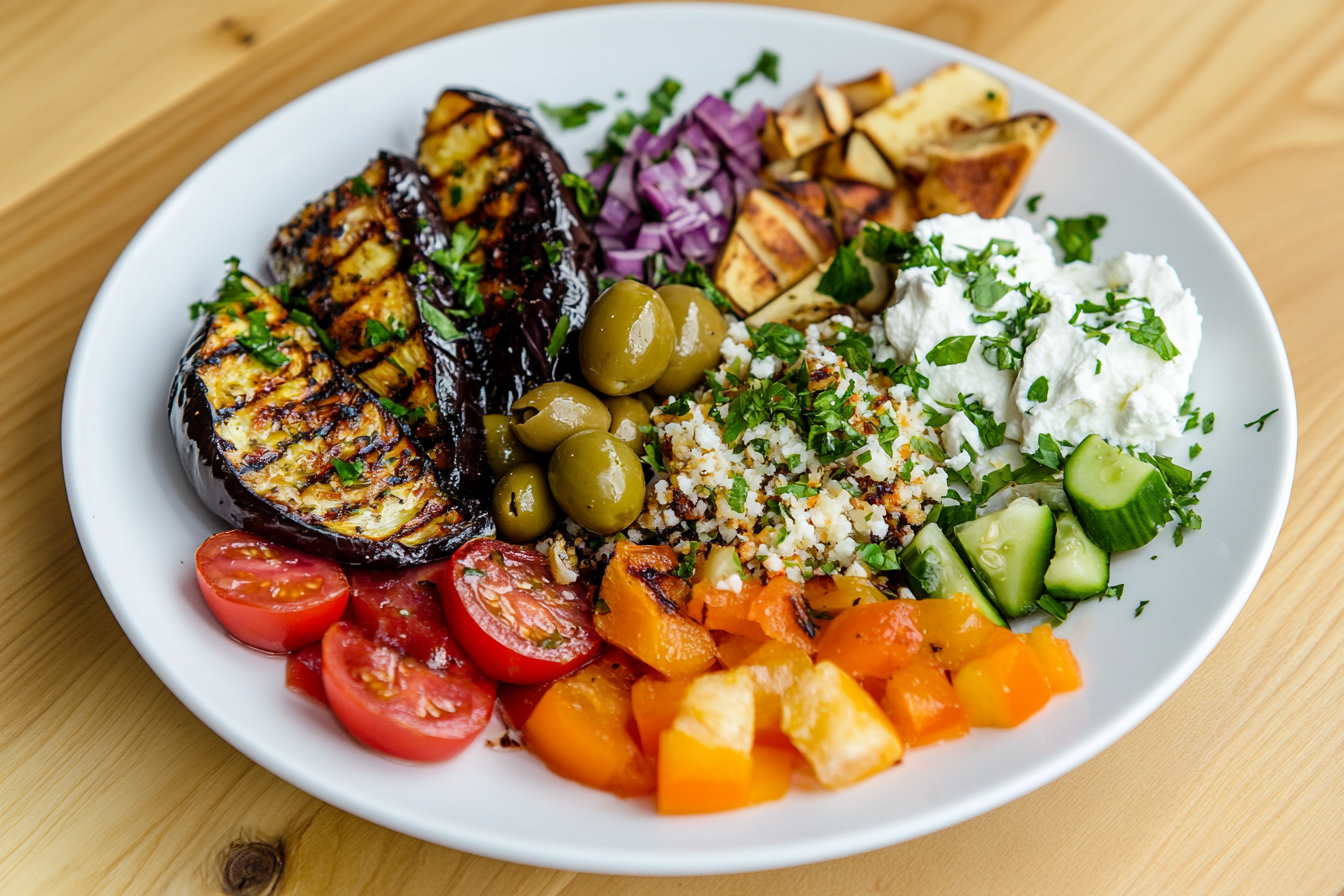From Challenges to Comfort: Palliative Care for Dementia Patients
Practical ways palliative care makes life more comfortable for dementia patients, addressing their physical and emotional needs with care.
Feeling your best at every age starts with the basics: moving your body, nourishing it well, and paying attention to your health. In this guide, we break down simple yet powerful habits that promote longevity and energy, from colorful plates to monitoring blood pressure and beyond.

We all know that staying active, eating well, and keeping tabs on our health can make a world of difference as we age. But when it comes down to it, these aren’t just “good habits” — they’re essential tools for a healthy, satisfying life. The way we treat our bodies today echoes in the decades ahead, shaping how we feel, what we’re capable of, and how we engage with the world.
As the years pass, physical ability naturally changes. Muscles may lose strength, balance can falter, and metabolism doesn’t quite work the way it used to. But these shifts aren’t a life sentence; they’re simply a reminder that our bodies need care to keep moving and thriving. Staying active can be like pressing a refresh button, helping us stay strong enough for the small things we often take for granted: climbing stairs, lifting groceries, or simply enjoying a brisk walk.
And it’s not just about physical strength. Food is more than just fuel; it’s medicine, it’s memory, it’s pleasure. Choosing what we eat with intention gives our cells the nutrients they need to fend off illness, support our energy, and maintain mental sharpness. This isn’t about sacrificing the foods we love but adding more of what our bodies truly need.
Finally, keeping an eye on our health means more than just the occasional visit to the doctor. Taking control of our health is an act of power — a way to know our own bodies, to notice changes, and to catch potential issues before they become bigger concerns. Whether it’s through a blood pressure monitor, regular checkups, or simply listening to our own instincts, monitoring our health helps us stay on track, reduce worry, and enjoy life more fully.
Physical ability doesn’t stay the same forever; it shifts and changes as we get older. But here’s the good news: keeping active can make a real difference. When you prioritize movement, you don’t just maintain your body—you help it thrive.
As the years pass, our muscles lose some of their natural power, and our balance and coordination might not be as sharp as they once were. This decline isn’t set in stone, though. When we stop challenging our bodies, everyday tasks like carrying groceries, climbing stairs, or even getting up from a chair can feel more difficult. But staying active can help keep those abilities strong.
Regular physical activity is a great way to improve your overall well-being. It boosts your physical health, sharpens your mind, and even enhances social connections. Plus, it’s one of the best ways to combat or improve chronic conditions like heart disease, diabetes, obesity, depression, and even certain cancers. According to health experts, here’s what adults—whether they have chronic health conditions, disabilities, or are in great shape—should aim for:
To keep your strength, agility, and balance in check, try weaving these exercises into your daily life. Simple routines like balance drills, weight training, or flexibility stretches can keep you moving confidently. Stay active, and let your body reward you for every step you take.

Food: it’s culture, comfort, tradition, and energy. But as we age, it becomes even more than that. It’s medicine, prevention, and a way to live more fully. The truth is, how you nourish yourself today shapes how you feel tomorrow. Eating well is about giving your body what it needs to keep humming along, with energy to spare for all of life’s little joys.
The best eating advice isn’t complicated. You don’t need to cut entire food groups or memorize the names of the latest superfoods. What your body craves is balance and variety.
Think of Your Plate as a Canvas
Imagine your meals bursting with color—deep green broccoli, ruby-red tomatoes, golden sweet potatoes, and bright blueberries. The more colors you have, the more vitamins and antioxidants you’re feeding your body. The magic of vibrant food is real: it helps protect your cells, boost your immune system, and keep inflammation at bay.
Not all calories are created equal. Your body knows the difference between the empty energy of a candy bar and the sustaining power of an apple with a handful of almonds. Focusing on whole, minimally processed foods is one of the best gifts you can give yourself.
Say Yes to Whole Grains
Brown rice, quinoa, oats, and whole-grain bread are more than just fillers. They’re packed with fiber, which helps keep your digestion smooth and your blood sugar steady. Whole grains are also linked to a lower risk of heart disease and certain cancers.
Healthy Fats Are Your Friends
Remember when we all feared fat? Turns out, healthy fats are superheroes in disguise. Avocados, olive oil, nuts, and seeds can protect your heart and keep your brain sharp. They even make your skin glow, which is a lovely bonus.
Water. It’s boring, we get it. But staying hydrated is essential for every system in your body, from keeping your energy up to lubricating your joints. As we age, our sense of thirst may not be as strong, so it’s important to drink regularly, even when you’re not parched.

If there’s one diet that keeps getting praise from nutritionists and researchers, it’s the Mediterranean diet. Why? Because it’s not just about what you eat; it’s a lifestyle. The people living around the Mediterranean—think Greece, Italy, and Spain—have been following this way of eating for generations, and they consistently live long, healthy lives.
What It Looks Like
The Mediterranean diet emphasizes whole, plant-based foods: fruits, vegetables, whole grains, legumes, and nuts. It favors heart-healthy fats like olive oil, limits red meat to occasional indulgences, and includes plenty of fresh fish and seafood. Meals are often seasoned with herbs instead of salt, and a glass of red wine is enjoyed in moderation, usually with food.
Staying on top of your health isn’t about paranoia; it’s about being aware. It's about knowing what’s happening under the hood so you can make decisions that keep you feeling strong and steady as the years go by. Think of it like regular tune-ups for your body—the most important vehicle you’ll ever own.
Health monitoring doesn’t have to be complicated, and it’s not about overloading yourself with worry. It’s about prevention, awareness, and giving yourself the best shot at living well. Here’s how to stay in the know without losing your mind.

With a few affordable tools, you can get a clearer picture of your health between doctor visits. These devices help you catch potential problems early, before they become something serious.
1. A Blood Pressure Cuff
High blood pressure is known as the “silent killer” because it often has no symptoms but can lead to heart disease and stroke. Keeping an eye on your numbers at home can be life-saving. You don’t need to become a medical expert; just measure a few times a week and note any concerning trends.
2. A Blood Sugar Monitor (if You Have Diabetes or Pre-Diabetes)
If you’re managing diabetes or are at risk, a blood sugar monitor is essential. Knowing your blood glucose levels helps you understand how different foods, activities, and stress impact your health. If you don't like pricking your finger, ask your doctor about a continuous glucose monitor and connect it to your smartphone.

Bloodwork is like a health report card. Once you hit a certain age (typically around 40 or 50), certain tests become essential, and it’s wise to get them done regularly.
1. Lipid Panel
This test measures cholesterol and triglycerides in your blood, giving you a picture of your heart health. It’s important to know both your total cholesterol and the ratio of LDL (the “bad” cholesterol) to HDL (the “good” cholesterol).
2. Blood Sugar and Hemoglobin A1C Tests
If you’re over 45 or have risk factors for diabetes (like a sedentary lifestyle or family history), regular blood sugar tests are critical. The Hemoglobin A1C test gives a snapshot of your average blood sugar over the past 2-3 months.
3. Complete Blood Count (CBC)
A CBC checks for a variety of things, including your red and white blood cell count, hemoglobin, and platelets. It can reveal signs of anemia, infection, or other underlying issues.
4. Vitamin D and Thyroid Tests
As we age, Vitamin D deficiency and thyroid issues become more common. Vitamin D supports bone health, and thyroid function affects everything from your metabolism to your mood.
Don’t skip your yearly check-ups. Seeing your doctor regularly means they can track your health over time and spot changes before they become problems.
1. Annual Physicals
A yearly physical is your chance to check in on everything: weight, blood pressure, heart rate, and a basic rundown of how your body is functioning. If you have specific concerns, this is the time to bring them up.
2. Eye, Dental, and Hearing Check-Ups
Eyes, teeth, and ears can reveal a lot about your overall health. Vision problems can sneak up on you, and untreated hearing loss has been linked to cognitive decline. As for your teeth, oral health is directly tied to heart health.
3. Staying Current on Vaccinations
Your immune system ages too. Ask your doctor about flu shots, the shingles vaccine, and any other immunizations you might need to stay well-protected.
Monitoring your health isn’t just about reacting to problems. It’s about being aware and proactive, so you can live with less worry and more vitality. Your body does a lot for you, day in and day out. Checking in on it regularly is the least you can do in return. So, grab that blood pressure cuff, track your numbers, and make friends with your doctor. In the end, the knowledge you gain is power—and it’s the key to living well for as long as possible.